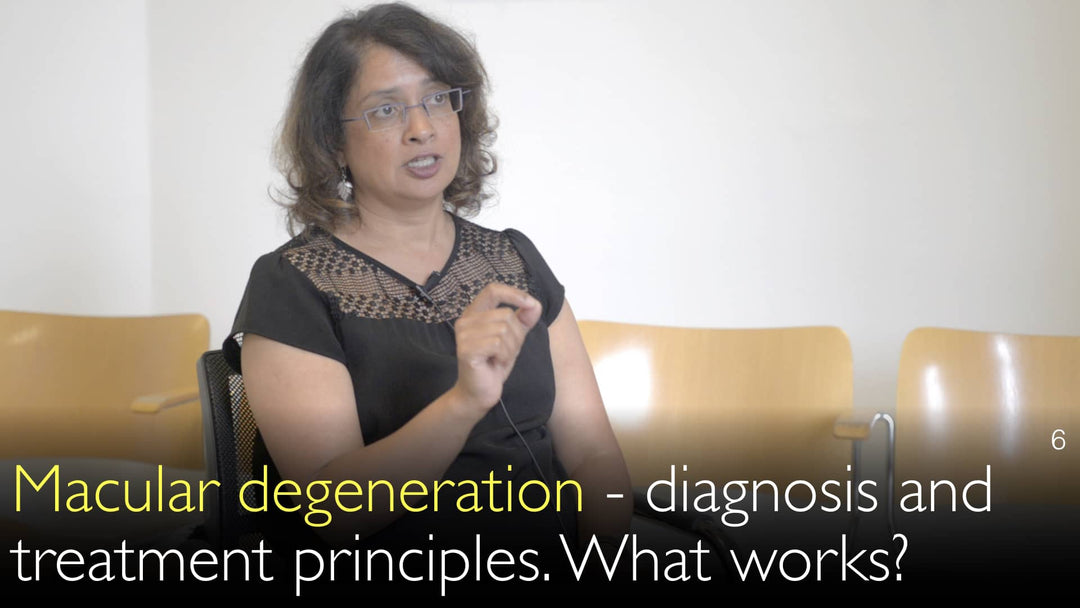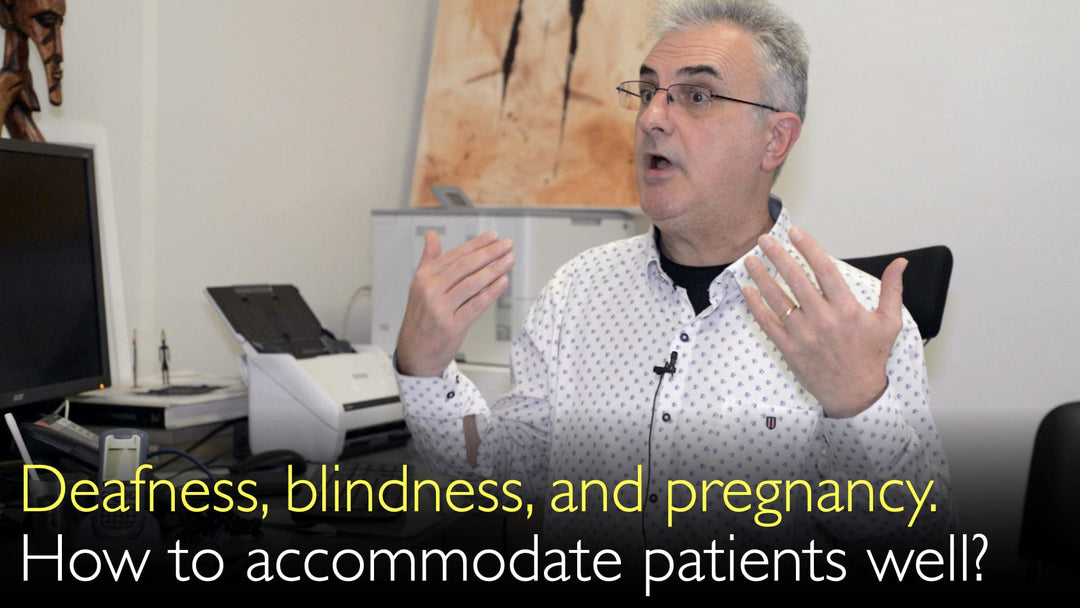Leading expert in pediatric ophthalmology, Dr. Dominique Bremond-Gignac, MD, explains how modern screening and anti-VEGF therapy are revolutionizing retinopathy of prematurity treatment to prevent childhood blindness in very low birth weight premature babies.
Modern Diagnosis and Treatment for Retinopathy of Prematurity
Jump To Section
- Retinopathy of Prematurity Overview
- Screening and Diagnosis Methods
- Telemedicine in Screening Role
- Anti-VEGF Injection Treatment
- Laser and Surgery Options
- Early Diagnosis and Prognosis
- Full Transcript
Retinopathy of Prematurity Overview
Retinopathy of prematurity remains a major cause of childhood blindness worldwide. Dr. Dominique Bremond-Gignac, MD, emphasizes that this condition has become a significant problem as medical advances allow more premature babies with very low birth weight to survive. The disease involves abnormal blood vessel growth in the retina of premature infants, which can lead to retinal detachment and permanent vision loss if not properly managed.
Screening and Diagnosis Methods
Modern retinopathy of prematurity screening has transformed dramatically from traditional examination methods. Dr. Dominique Bremond-Gignac, MD, describes how diagnostic technology has evolved from difficult examinations with headsets to advanced wide-field fundus imaging systems. These new handpieces provide comprehensive retinal views and are independent of larger machines, making them significantly easier to use on very small eyes of premature infants.
The wide-field imaging capability represents a critical advancement in retinopathy of prematurity detection, allowing healthcare providers to capture detailed images of the entire retinal surface. This comprehensive view enables earlier detection of abnormal vascular changes that signal the need for intervention.
Telemedicine in Screening Role
Telemedicine has emerged as a powerful tool for scaling retinopathy of prematurity screening programs. Dr. Dominique Bremond-Gignac, MD, explains that trained nurses or paramedics can capture retinal images at the bedside, which are then transmitted to retinal specialists for remote evaluation. This approach eliminates the need for specialists to be physically present for initial screenings while maintaining diagnostic accuracy.
This telemedicine model allows retinal surgeons to review images and determine appropriate follow-up, whether that means continued monitoring or immediate referral to specialized retina centers for treatment. The scalability of this approach addresses the critical need for widespread screening in neonatal intensive care units.
Anti-VEGF Injection Treatment
Anti-VEGF injections represent a breakthrough treatment for retinopathy of prematurity. Dr. Dominique Bremond-Gignac, MD, references landmark research published in the New England Journal of Medicine that demonstrated the effectiveness of this approach. These medications work by inhibiting vascular endothelial growth factor, the protein responsible for abnormal blood vessel growth in the damaged retina.
The anti-VEGF treatment approach specifically targets the pathological neovascularization process that characterizes advanced retinopathy of prematurity. This targeted therapy can prevent progression to retinal detachment while preserving visual potential, making it a valuable alternative or complement to traditional laser treatment.
Laser and Surgery Options
While anti-VEGF therapy has transformed retinopathy of prematurity management, laser treatment remains an important option in certain cases. Dr. Dominique Bremond-Gignac, MD, notes that laser application should be used as little as possible, with anti-VEGF injections sometimes combined with laser therapy for optimal results. The treatment strategy must be tailored to each infant's specific retinal findings and disease progression.
Retinal surgery represents the last resort for advanced retinopathy of prematurity cases that progress despite other interventions. Dr. Dominique Bremond-Gignac, MD, emphasizes that surgical outcomes are generally less favorable, highlighting the critical importance of early detection and intervention before surgical options become necessary.
Early Diagnosis and Prognosis
Early diagnosis remains the single most important factor determining successful retinopathy of prematurity outcomes. Dr. Bremond-Gignac stresses that timely screening enables intervention before irreversible retinal damage occurs. The combination of modern wide-field imaging, telemedicine capabilities, and effective anti-VEGF treatments has dramatically improved prognosis for premature infants at risk of vision loss.
Dr. Anton Titov, MD, and Dr. Dominique Bremond-Gignac, MD, agree that systematic screening programs utilizing these advanced technologies represent the future of retinopathy of prematurity prevention. When implemented effectively, these approaches can significantly reduce childhood blindness rates among premature infants through early detection and appropriate treatment intervention.
Full Transcript
Dr. Anton Titov, MD: Retinopathy of prematurity is one of the major causes of childhood blindness. Many premature babies with very low birth weight survive today, so retinopathy of prematurity is a big problem.
How to prevent retinopathy in premature babies? How to diagnose retinopathy of prematurity? What are the best treatment methods for retinopathy of prematurity?
Dr. Dominique Bremond-Gignac, MD: Very, very good question. Because retinopathy of prematurity is a real blindness problem for some very young babies, we need to have the best quality screening for retinopathy of prematurity. After that, we go to the treatment of retinopathy of prematurity.
But first of all, it is the screening. For the screening, we need to have some larger diagnostic methods that are easy to use for looking at the retina. There are new retinopathy diagnostic methods. These new diagnostic methods are better than what we were doing in the past.
When I was a resident, we were going to patients with a headset to just look at the retina. It was so difficult because the child is so small, and the eye is small also. It was very complicated.
Now we have retina diagnostic systems with a handpiece. This handpiece has a very wide fundus, so we have wide-field fundus. I think the best feature of modern retinopathy of prematurity diagnostic methods is that the handpiece is independent of the machine. It's very easy to use, and it has made diagnosing retinopathy of prematurity easier.
The screening in some centers is done by nurses. I think this is very, very interesting. It's, of course, very difficult because nurses in neonatology are very busy. But if we can find a professional paramedic who could handle looking at the retina, it will be very good.
We also work on transmission of the images via telemedicine. That's very interesting also because you are not obliged to be at the bedside for diagnosis. If you have someone who takes the pictures first, then the retinal surgeon or the retinal specialist can look at the images and say, "Okay, don't worry, we stay here, just do the follow-up," or "This patient must be going to the specialized retina center, and we will apply a treatment for retinopathy of prematurity."
So what are the treatments for retinopathy of prematurity? We have different treatments for retinopathy of prematurity. We have a new treatment with anti-VEGF injection, which is useful.
There was a nice publication in the New England Journal of Medicine some years ago that demonstrated the use of anti-VEGF for retinopathy of prematurity. That was very interesting. It is not the only treatment of retinopathy of prematurity.
We must stop the new vascularization that is just growing in a damaged retina. The other treatment is retinal surgery if needed. But for sure, we just have to use the laser as little as possible.
The anti-VEGF injection can also be combined. The last possible resort for retinopathy of prematurity is retinal surgery. When we go to retinal surgery, we know that the prognosis is not very good. That's why early diagnosis of retinopathy of prematurity is the key to treatment success.
Dr. Anton Titov, MD: That is very interesting that you mentioned the application of telemedicine increasing in use because it allows the scalability of the screening by somebody who is not necessarily a retinal disease specialist. But reviewing the images remotely will help to diagnose these babies with retinopathy of prematurity and hopefully will start the non-surgical treatment of retinopathy of prematurity early.
Dr. Dominique Bremond-Gignac, MD: Exactly. The early screening for retinopathy of prematurity is also the key to success.







